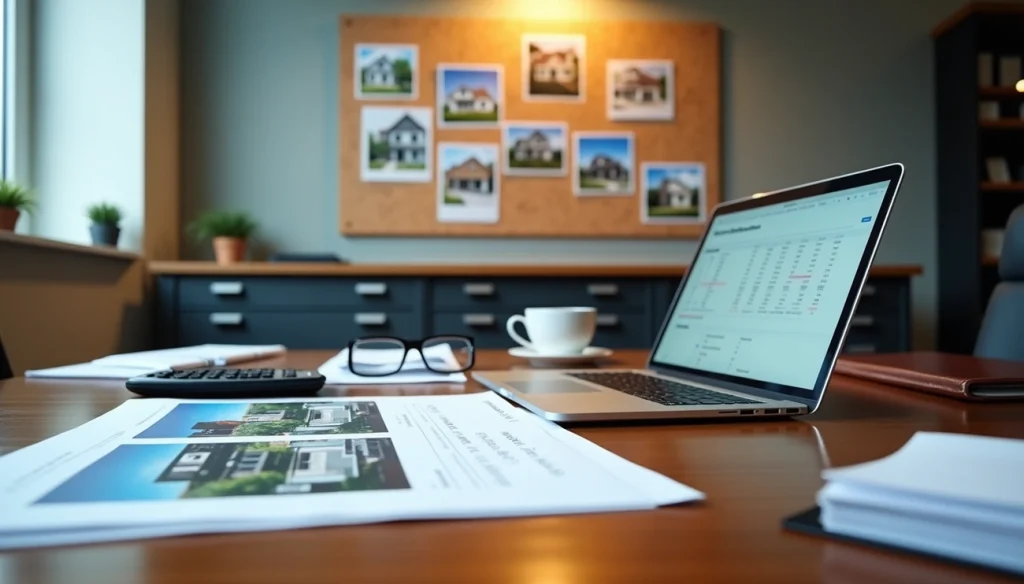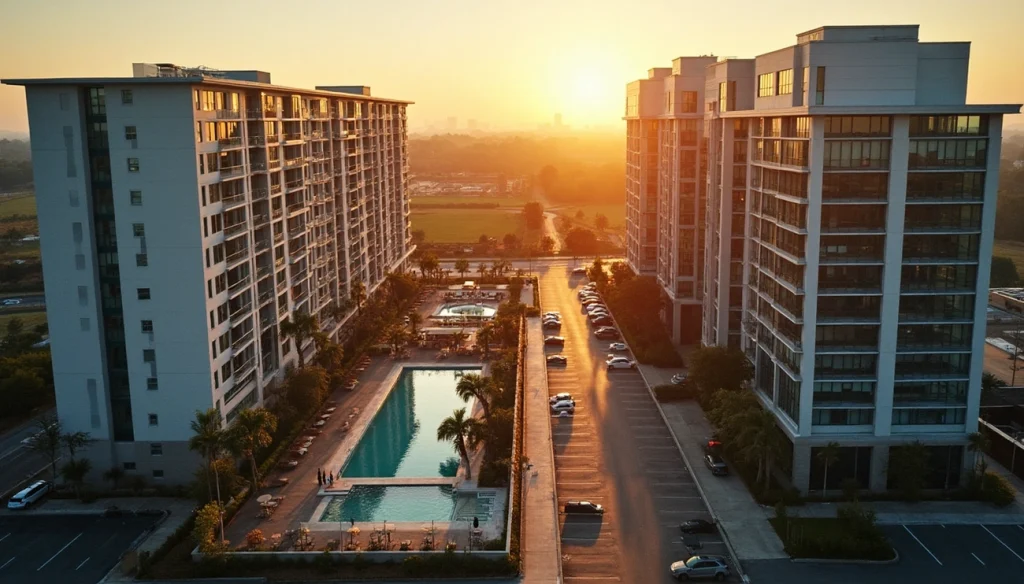When researching neighborhoods for your next property purchase, it’s important to consider various factors. This guide will outline key aspects to evaluate when assessing a location.
The Neighborhood
To get a complete picture of a neighborhood, consider its overall ambiance and safety. Are there convenient amenities nearby, like grocery stores, restaurants, and parks? Also, assess whether the neighborhood is growing or declining. These elements reveal its desirability and potential for future value appreciation.
The Schools
Even if you don’t have school-aged children, the quality of schools in a neighborhood matters. A highly regarded school district can enhance the appeal and value of a property. Access to excellent educational institutions benefits both families and contributes to the stability and desirability of the neighborhood.
Transportation and Commute
Ease of transportation and commute times are important factors to consider when
Researching Neighborhoods
When researching neighborhoods, there are important factors to consider for making an informed decision about the ideal property location. Start by analyzing the local population, looking at demographics, population growth, and diversity. This gives you an understanding of the community’s dynamics and potential for future development. Another crucial aspect is evaluating neighborhood amenities, such as schools, parks, shopping centers, and restaurants that are important to your lifestyle.
Next, evaluate the location by checking the distance from your work and school. Commute times and convenience play a major role in your satisfaction. Safety and security are also important considerations. Research the crime rates and look for safety measures like gated communities or neighborhood watch programs.
Once you’ve narrowed down potential neighborhoods, analyze the property itself. Consider the size, layout, and whether it meets your current and future needs. Assess the property maintenance needs and look for signs of neglect or costly repairs.
Additionally, analyze the market by researching local trends and property value appreciation or depreciation. Understand the local tax and utility rates as they impact your expenses.
Finally, when making your decision, create a pro/con list for each neighborhood and property. Also, consider the future and how your needs may change over time.
Analyze Local Population
When assessing a potential neighborhood, it’s crucial to analyze the local population to gain insights into the community. Understanding the demographics offers valuable information about the lifestyle, culture, and available amenities. Here are some key factors to consider:
- Age Distribution: Take a look at the different age groups in the area. A balanced mix indicates a vibrant and inclusive community.
- Household Types: Consider the prevalent types of households – families, singles, seniors, etc. This impacts social dynamics and available amenities.
- Local Events and Institutions: Research local schools, parks, community centers, and cultural institutions. These indicate a thriving neighborhood with opportunities for recreation and education.
- Future Projections: Investigate planned developments, commercial growth, or infrastructure improvements. These give hints about the neighborhood’s direction.
Understanding the local population helps evaluate if the neighborhood aligns with your preferences and lifestyle. Analyzing these factors provides valuable insights into community dynamics, aiding in making an informed decision for your property purchase.
Analyze Neighborhood Amenities
When evaluating a potential neighborhood, it’s important to consider the amenities it offers. For property investment, assess the convenience and quality of amenities in the area. Here are some key factors to think about:
- Shopping Centers and Restaurants: Look into the availability of grocery stores, malls, and dining options. A variety of choices can enhance the convenience and livability of a neighborhood.
- Recreational Facilities: Check for parks, playgrounds, sports fields, and other recreational amenities. These not only provide leisure activities but also contribute to a vibrant community and better quality of life.
- Educational Institutions: Consider the availability and proximity of schools, colleges, and universities. Living near reputable educational institutions adds value to your property and provides access to quality education.
- Healthcare Facilities: See if there are hospitals, clinics, and healthcare centers nearby. Access to medical facilities is crucial for residents’ well-being and affects the desirability of a location.
- Public Transportation: Evaluate the availability and accessibility of public transportation options like buses, trains, or subways. Having easy access to public transport simplifies commuting and makes the neighborhood more attractive.
Remember, amenities play a significant role in the comfort and convenience of a neighborhood. Analyzing the quality, variety, and proximity of amenities helps you make informed decisions about the suitability of a location for your property investment.
Evaluating the Location
When looking to buy or rent a property, evaluating the location is crucial. Here are some important factors to consider when assessing a neighborhood:
- Check the distance from work and school: Consider how close the neighborhood is to your workplace or your children’s school. A long commute can add stress and expenses, so choose a location that offers convenience in terms of travel time.
- Evaluate safety and security: Safety should be a top priority. Look for low crime rates, well-lit streets, and the presence of security measures like neighborhood watches or patrols. Check online crime mapping tools or speak with local law enforcement for reliable information.
- Analyze neighborhood amenities: Assess the availability of essential amenities such as grocery stores, hospitals, parks, and recreational facilities. Access to quality healthcare, green spaces, and leisure activities can greatly enhance your quality of life.
- Consider property size and layout: Look at the size and layout of the properties in the neighborhood. Determine if they meet your current and future needs in terms of the number of bedrooms, bathrooms, and overall living space. Evaluate if the property can accommodate any specific requirements you may have.
- Determine property maintenance needs: Assess the overall condition and maintenance needs of the properties in the neighborhood. Are they well-maintained with tidy yards and clean exteriors? Understanding the maintenance requirements can help you plan for potential expenses and ensure the property remains in good condition over time.
Check Distance from Work & School
Checking the distance from work and school is a crucial aspect when evaluating a neighborhood for property location. Commuting to work or school can significantly impact one’s daily routine and overall quality of life.
Evaluate Safety & Security
When considering a neighborhood for your ideal property location, prioritize safety and security. Here are some key factors to consider:
- Crime rates: Research the area’s crime rates to understand overall safety. Check with local law enforcement or online crime databases for accurate information.
- Neighborhood watch programs: Find out if there’s an active neighborhood watch program. These programs promote community vigilance and provide an extra layer of security.
- Lighting and visibility: Take note of street lighting, especially in residential areas. Well-lit streets and public spaces deter criminal activity and create a safer environment.
- Security systems: Check the percentage of homes equipped with security systems. This indicates residents’ emphasis on security and property protection.
- Proximity to emergency services: Consider the distance to hospitals, police stations, and fire departments. Quick access to emergency services is vital in times of crisis.
- Online community forums: Explore online forums or social media groups specific to the neighborhood. Residents may share experiences and insights on safety and security.
- School safety: If you have children or plan to start a family, research safety measures in local schools. Look for secure entrances, surveillance systems, and proactive safety protocols.
Remember, feeling safe and secure in your neighborhood is essential for peace of mind and your family’s well-being. Evaluating safety and security factors will help you make an informed decision when choosing a property.
Analyzing the Property
When evaluating a location for a potential property, it’s crucial to thoroughly analyze the property itself. This involves considering the size and layout of the property, which can significantly affect its functionality and appeal. It’s also important to assess the property’s maintenance needs, including landscaping requirements, structural integrity, and potential repair or renovation costs. By conducting a comprehensive evaluation of these aspects, you can make a more informed decision about the suitability of the property for your needs and ensure a successful investment.
Consider the Property Size & Layout
When choosing a location for your ideal property, it’s important to consider the size and layout. Make sure the size meets your needs and future plans. Do you want a cozy space or a spacious home? Also, think about the number of bedrooms, bathrooms, and overall square footage. This ensures you have enough space for your lifestyle and any future changes.
The layout of the property is crucial for functionality and convenience. Consider how the rooms flow and align with your daily activities. Do you prefer an open concept or more defined and private spaces? Your layout preferences impact your overall satisfaction.
Lastly, think about any modifications or renovations needed for your desired layout. Check if the existing layout allows for changes without major structural work, like adding an office or creating an open kitchen.
Determine Property Maintenance Needs
When considering a potential property location, it’s important to think about the property’s maintenance requirements. Here are some key things to evaluate:
- Structural Integrity: Assess the overall condition of the property, including the foundation, walls, roof, and structural components. Look for signs of cracks, water damage, or any other indicators of possible maintenance issues.
- Plumbing and Electrical Systems: Inspect the plumbing and electrical systems to ensure they are in good working order. Check for leaks, faulty wiring, or outdated systems that may need repairs or upgrades.
- Exterior Maintenance: Consider the amount of outdoor space and the maintenance it entails. Evaluate the condition of the lawn, landscaping, and any structures like fences or decks. Determine if you have the time, resources, or desire to maintain these areas.
- Finishes and Appliances: Take note of the condition of finishes such as flooring, paint, and fixtures. Also, consider the age and functionality of appliances that come with the property. Assess whether updates or replacements would be necessary.
Analyzing the Market
Researching the local market is crucial when evaluating a neighborhood for an ideal property location. Understanding current market trends provides valuable insights into the area’s potential growth and stability. Consider these key factors:
- Research Local Market Trends: Examine recent sales data and pricing trends in the neighborhood. Look at how property values have changed over time, whether the market is thriving or declining, and if there’s high demand for properties in the area. This information helps assess future prospects.
- Understand Local Tax & Utility Rates: When evaluating financial implications, consider local tax rates and utility costs. High property taxes or expensive utilities can impact your budget and affordability. Research these expenses and factor them into your decision-making process.
Key Factors to Analyze in the Market:
- Recent sales data and pricing trends
- Property value changes over time
- Market demand for properties
- Local tax rates
- Utility costs
Research Local Market Trends
When evaluating a neighborhood for an ideal property location, analyzing local market trends is crucial. Understanding the current real estate market conditions provides valuable insights into the area’s stability and growth potential. Consider these key factors:
- Historical Sales Data: Research the property sales data in the neighborhood. Look for trends in property values over the past few years. Are prices steadily increasing or fluctuating? This information indicates the real estate market’s stability or significant shifts.
- Inventory Levels: Note the number of properties listed for sale. Low inventory suggests high demand and a competitive market, while a high number of listings may indicate a slower or oversaturated market.
- Days on Market: Pay attention to the average number of days properties stay on the market before being sold. A shorter duration suggests a competitive market requiring quick decision-making, while a longer duration may indicate a buyer’s market with more negotiating power.
- New Developments: Keep an eye on planned or ongoing major developments in the area, such as infrastructure upgrades or residential projects. These can significantly impact property values and the location’s desirability.
- Rental Market: Analyzing the rental market is crucial for investment properties or if you’re looking to rent in the area. Research average rental rates, vacancy rates, and rental demand. This information helps determine potential rental income and the overall attractiveness of the area for tenants.
Understand Local Tax & Utility Rates
When evaluating a potential property location, it’s important to consider the local tax and utility rates. These factors can significantly impact your overall cost of living and shouldn’t be overlooked. Here are some key points to consider:
- Research Local Tax Rates: Look into the property tax rates in the neighborhood you’re considering. Understanding the rates will give you a clearer picture of your financial obligations. Check for any special assessments or additional taxes that may apply to the property.
- Explore Utility Costs: Inquire about electricity, gas, water, and other utility prices in the area. Consider if the rates are reasonable and within your budget.
- Compare with Surrounding Areas: Compare the tax and utility rates with neighboring areas. Similar properties in different neighborhoods can have significantly different costs. This comparison can help you assess the financial advantages or disadvantages of the location.
- Consult with Professionals: If you find the tax and utility rates complex or need assistance, consider consulting with real estate agents or property experts. They can provide valuable insights and help you understand the local tax and utility systems.
- Consider Long-Term Implications: Keep in mind that tax rates and utility costs can change over time. Research the historical trends to understand the likelihood of future increases. This will help you make a more informed decision about the long-term affordability of the location.
Making Your Decision
When it comes to evaluating neighborhoods for an ideal property location, making the right decision is absolutely crucial. Here are some key factors that you should definitely consider before finalizing your choice:
Create a Pro/Con List:
It’s important to be systematic when weighing the positives and negatives of each neighborhood. Take into account factors such as proximity to amenities, safety, school and work commutes, property values, and overall quality of life. This exercise will help you prioritize what matters most to you and make a well-informed decision.
Think About the Future:
While assessing the present state of a neighborhood is important, don’t overlook its future potential. Are there any upcoming development projects or planned infrastructure improvements? Is the area experiencing growth in terms of businesses and job opportunities? By forecasting the future prospects of a neighborhood, you can gain valuable insights into its long-term desirability and potential for appreciation.
Make sure to consider these factors carefully to ensure that you make the best choice when it comes to selecting the right neighborhood for your property.
Conclusion
When researching neighborhoods for your new property, it is crucial to consider various factors that will empower you to make an informed decision. Evaluating neighborhoods involves taking into account multiple aspects, such as the crime rate, the quality of the school district, and the commute time. Moreover, it is important to consider the distinctive characteristics that align with your target market’s preferences.
During the process of researching neighborhoods, it is absolutely essential to exercise patience. Finding the perfect property and neighborhood for your new business can be a challenging endeavor. However, by staying focused and diligent, you can ensure that you make the right choice.
Stay tuned for more valuable tips and insights on how to identify the ideal property and optimize your research process for maximum success!















